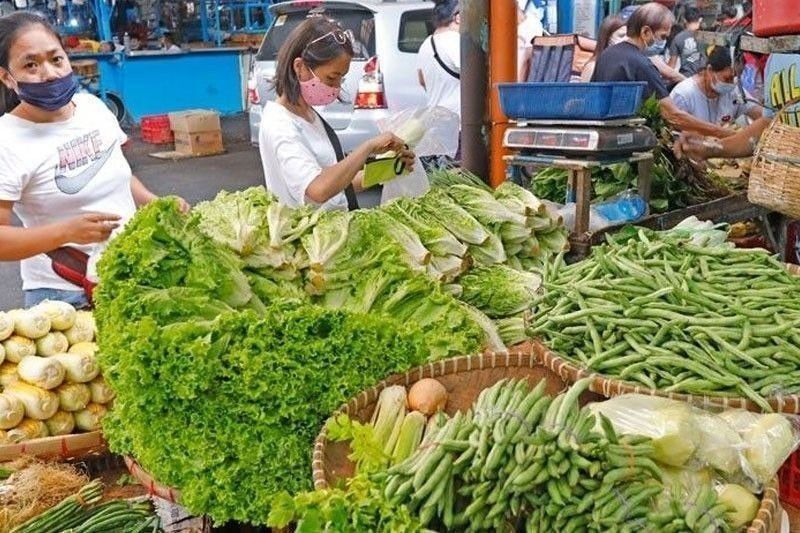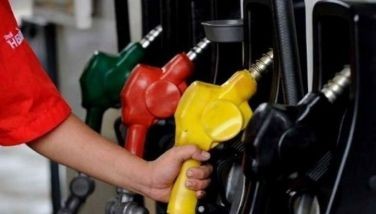Inflation likely went up in August

MANILA, Philippines — Most economists believe inflation likely accelerated in August to at least five percent, while some see the rise in prices easing slightly after cooling for six straight months to 4.7 percent in July from a peak of 8.7 percent in January.
China Bank chief economist Domini Velasquez said headline inflation likely quickened to 5.3 percent in August from 4.7 percent in July due to substantial month-on-month increases in rice, vegetable and oil prices.
“Sequential typhoons since the end of July pushed up food prices. Imported rice was also significantly higher due to India’s exports curbs and reported hoarding in Thailand. Additionally, the price of LPG also ticked up in August,” Velasquez said.
Aside from its impact on transport inflation, she said the eight-week increase in domestic pump prices and higher toll rates could have exacerbated food inflation in August.
Lastly, Velasquez said a depreciated peso that almost touched the 57 to $1 level could have made imports more expensive.
“Inflationary pressures were somewhat mitigated by lower prices of electricity across major island groups as cooler weather dampened demand,” she said.
Despite the projected higher headline rate in August, she said that core inflation is expected to continue its downtrend to around six percent in August from 6.7 percent in July.
China Bank, Velasquez said, does not expect the Bangko Sentral ng Pilipinas (BSP) to react immediately with higher policy rates to the expected inflation uptick.
“Shocks for the month of August were largely supply side, but have not, so far, derailed the inflation path toward the target range in the fourth quarter. We still expect inflation to fall within the BSP’s target by November,” Velasquez said.
Jun Neri, lead economist at Ayala-led Bank of the Philippine Islands, said inflation likely picked up to five percent due to higher prices of vegetables, LPG, kerosene and diesel.
Neri said the lower prices of electricity and other food items may help offset other price increases.
Security Bank chief economist Robert Dan Roces sees inflation settling at five percent or within a range of 4.8 to 5.2 percent in August, or a 0.8 percent month-on-month increase, due to higher oil and food prices.
Although the current diesel pump price is significantly lower than the P75 per liter average recorded in June last year, Roces pointed out that food and fuel prices continue to be the main drivers of inflation.
“Notably, farmgate prices of other food items decreased in August compared to July. Despite this, retailers may either be reluctant to reduce current prices, or the price reduction may be taking some time,” Roces said.
According to Roces, the current inflation increase is mainly driven by the price of rice, which has recently surged by up to P10 per kilo.
“However, this likely uptick in the August inflation is relatively moderate compared to the inflation spike experienced by consumers from December 2022 to February 2023, and was exacerbated by base effects from August 2022,” Roces added.
Security Bank sees inflation falling within the BSP’s two to four percent target range by the fourth quarter of the year, barring sustained spikes in rice and fuel in the remaining months of 2023.
ING Bank senior economist Nicholas Mapa also said that inflation likely accelerated to five percent on resurgent price increases for fuel products due to global developments.
“On top of this are higher costs for select food items impacted by adverse weather conditions. The pop in headline inflation likely means BSP will be on hold for the rest of the year with the central bank mindful of the ongoing slowdown of the economy as growth loses steam,” Mapa said.
Michael Ricafort, chief economist at Rizal Commercial Banking Corp., also believes the rise in prices hastened to five percent for August on the back of higher local palay and rice prices, rising global oil prices as well as weaker peso.
“The increase in prices was due to the storm damage since the latter part of July that hit northern and central Luzon, the biggest producers of rice, corn, vegetables, and other agricultural products,” Ricafort said.
Ricafort said headline inflation still expected to ease year-on-year for the coming months due to higher base effects.
The Yuchengco-led bank sees inflation averaging 5.5 to 5.8 percent this year before easing to a range of three to 3.5 percent next year. It will average four percent in the third quarter and further ease to three percent in the fourth quarter of the year. Inflation would further ease to two percent in the first quarter of next year before normalizing at 3.5 percent for the rest of 2024.
Alvin Arigo, economist at Lucio Tan’s Philippine National Bank, said inflation eased slightly to 4.6 percent in August from 4.7 percent in July due to sustained base effects, but the rate of month-on-month price increase likely accelerated to its highest level in seven months due to the negative impact of weather-related disruptions.
“From September to December, we forecast that the pace of month-on-month price increases will be elevated due to food (particularly rice), fuel, and lagged impact of minimum wage hikes,” Arigo said.
Arigo believes the year-on-year rate remains on track to fall below four percent in the fourth quarter of 2023 as the base effects will be more favorable in the next four months.
“As a baseline view, we believe that the BSP will decide to leave the key policy rate unchanged during its upcoming meetings in September, November and December,” Arigo said.
Aris Dacanay, economist for ASEAN at HSBC, also believes inflation eased to 4.6 percent last year, enough to slow the consumer price index (CPI) back to within the two to four percent target band of the central bank.
“These pressures were evident in heavily weighted commodity baskets, most prominent of which was rice. Rice prices rose considerably in August as India’s ban on rice exports took a toll on global supply,” Dacanay said.
Dacanay added that global oil prices also increased due to the supply cuts by the Organization of the Petroleum Exporting Countries (OPEC), leading to a sharp increase in domestic diesel prices that was partly offset by a sizeable 2.5 percent downward adjustment in electricity rates as well as the continued normalization of vegetable prices.
Dacanay warned that there is a risk of the BSP resuming its tightening cycle to suppress second round effects should the rise in rice and oil prices lead to the rise of the prices of other commodities.
- Latest
- Trending


























